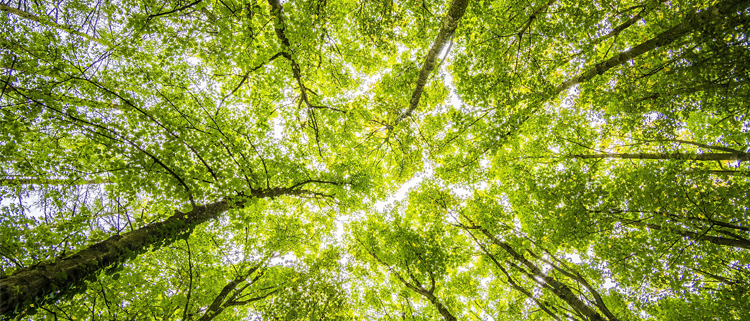At Baird Brothers, we believe that it’s our responsibility to be a steward of our natural hardwood resources. From the beginning, we’ve made it our mission to build this business with future generations in mind; so for us, sustainability doesn’t start and end with our manufacturing process. In order to make sure our business is here for future generations, we need to make sure that our forests are, too!
Sustainable forestry is about finding a balance and having concern for the bigger picture. So, when purchasing from timber companies, it’s important for us to know that the companies we work with are managing our natural hardwood resources properly. That same responsibility is why we implemented green manufacturing practices in the early 80s, well before most businesses were discussing eco-friendly ideas.
Sustainable Timber Harvesting
Sustainability is, by definition, the avoidance of the depletion of natural resources in order to maintain an ecological balance, and timber is one of the most renewable natural resources we have (when treated with respect).
In order for our forests to properly regenerate, the right trees must be selected at the right time while ensuring that young trees are growing for the future.
That’s where responsible logging companies like Frontier Woodland Services, LLC can help. Dan Castellucci, owner at Frontier, saw a niche in working with private landowners (according to the American Forest Foundation, family-owned forests account for more than 358 billion cubic feet of standing wood), and he uses his background and education to ensure that hardwood resources are harvested using sustainable logging practices.
According to the Rainforest Alliance, “The goal [of sustainable logging] is to harvest in such a way that species have the chance to regenerate and ensure that the forest’s overall ecological health is maintained, restored or even enhanced.”
Interestingly, disturbance is an essential part of forest regeneration and timber harvests help to control where and how that disturbance occurs. Three of the most common timber harvesting practices are clearcutting, selection harvesting and shelterwood.
Clearcutting
Clearcutting is the most visually drastic method of harvesting, but it is designed to mimic natural disasters, like wildfires. The open spaces created following a harvest allow tree species that are intolerant of shade to regenerate rapidly.
Selection Harvesting
Also known as selective cutting, selection harvesting is used in forest areas that have become overly dense. Trees are cut at uneven ages, leaving a partially opened canopy that allows younger trees to grow.
Shelterwood
Shelterwood is gaining in popularity because overstory trees are not removed until a desired amount of regeneration occurs. Shelterwood harvests happen over a longer period of time and include multiple cuts.
Sustainable Manufacturing Processes
At Baird Brothers, we take sustainability one step further by implementing sustainable manufacturing processes that allow us to use our natural timber resources to the nth degree. We are proud to say that our hardwood products are produced by utilizing nearly every inch of harvested timber we purchase because we always work to build our business with future generations in mind.
In order to minimize waste as much as possible, we have implemented processes and technology that make operations more efficient. We’re always on the lookout for advances in technology that improve the milling process, reduce waste and optimize our natural resource.
Cut-Offs Used for Finger-Jointed Mouldings
The milling process for hardwood products produces a large number of cut-offs that are still high-quality wood pieces. So, in an effort to reduce waste, we re-purpose those cut-offs into products like primed, finger-jointed mouldings and workbench tops.
Shorter boards are reassembled by interlocking the finger-joints and filling a jig to create 16’ mouldings which are significantly stronger than MDF and come in a variety of profiles, including hundreds of unique custom offerings.
Using Waste Material to Power Operations
At Baird Brothers, we’re proud to have a very small environmental footprint, all thanks to our on-site boilers and electrical generators.
Materials that would otherwise be thrown aside are ground into a sawdust consistency and transferred to a boiler facility where they’re burned to generate heat for our dry kilns and buildings. Even the heat produced by our off-the-grid electrical generators is reused to power our kilns.
Why Sustainability is Important to Baird Brothers
Sustainably-produced hardwood products are the result of companies that care about forests and future generations. And, at Baird Brothers, we don’t just talk sustainability. We live it!
Early on, our leadership understood that sustainability doesn’t simply benefit current generations; it lays the groundwork for generations to come. Our founding members implemented green business practices almost 40 years ago out of respect for our forests and natural resources, and we’re keeping that tradition of excellence alive and well.
We are proud to be American’s source for fine hardwood products and we work every day to responsibly build our business with future generations in mind—both ours and yours!

